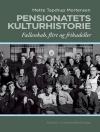In ‘Social England under the Regency, ‘ John Ashton provides a meticulous exploration of the intricate social fabric and cultural transformations of England during the Regency period (1811-1820). His prose offers a vivid synthesis of historical detail and narrative flair, weaving together anecdotes, societal norms, and popular customs. Ashton’s comprehensive approach situates the Regency within the broader context of British history, highlighting the interplay between class, gender, and the arts during this fascinating era marked by political upheaval and literary flourishing. John Ashton, a noted historian and author, draws from a wealth of primary sources, including personal letters, journals, and contemporary literature, to craft an engaging and informative portrait of a pivotal time in English history. His deep-seated interest in the social dynamics of past societies informs his work, as he presents not just facts but the lived experiences of individuals across various strata. Ashton’s scholarly background and passion for the 19th-century cultural landscape imbue the text with authenticity and depth. This book is highly recommended for both historians and general readers interested in understanding the nuances of Regency society. Ashton’s insightful analysis and rich narratives illuminate the complexities of this era, making ‘Social England under the Regency’ an essential addition to any library focused on British social history.
Circa l’autore
John Ashton, a noted historian and author, is best remembered for his contributions to the literature chronicling the social histories of various eras in British history. His erudite work, ‘Social England under the Regency, ‘ stands as a seminal piece that richly details the Regency period, encompassing the years when George IV served as the Prince Regent from 1811 to 1820. Ashton’s scholarly work is characterized by meticulous research and a clear narrative style that brings to life the customs, politics, and daily life of the period. His approach often involves combing through an extensive array of primary sources, including personal letters, diaries, and newspapers, to recreate an authentic picture of the times. Ashton’s focus in his writing is not just on the upper echelons of society but also on the experiences of the lower classes, thus providing a comprehensive overview of the epoch. Though Ashton’s bibliography may not be extensive, his work stands out for the depth of its inquiry and its accessibility to both academics and lay readers interested in the intricacies of English social history. His book remains a valuable resource for those seeking to understand the complexities and the cultural dynamics of England during the transformative years of the early 19th century.












